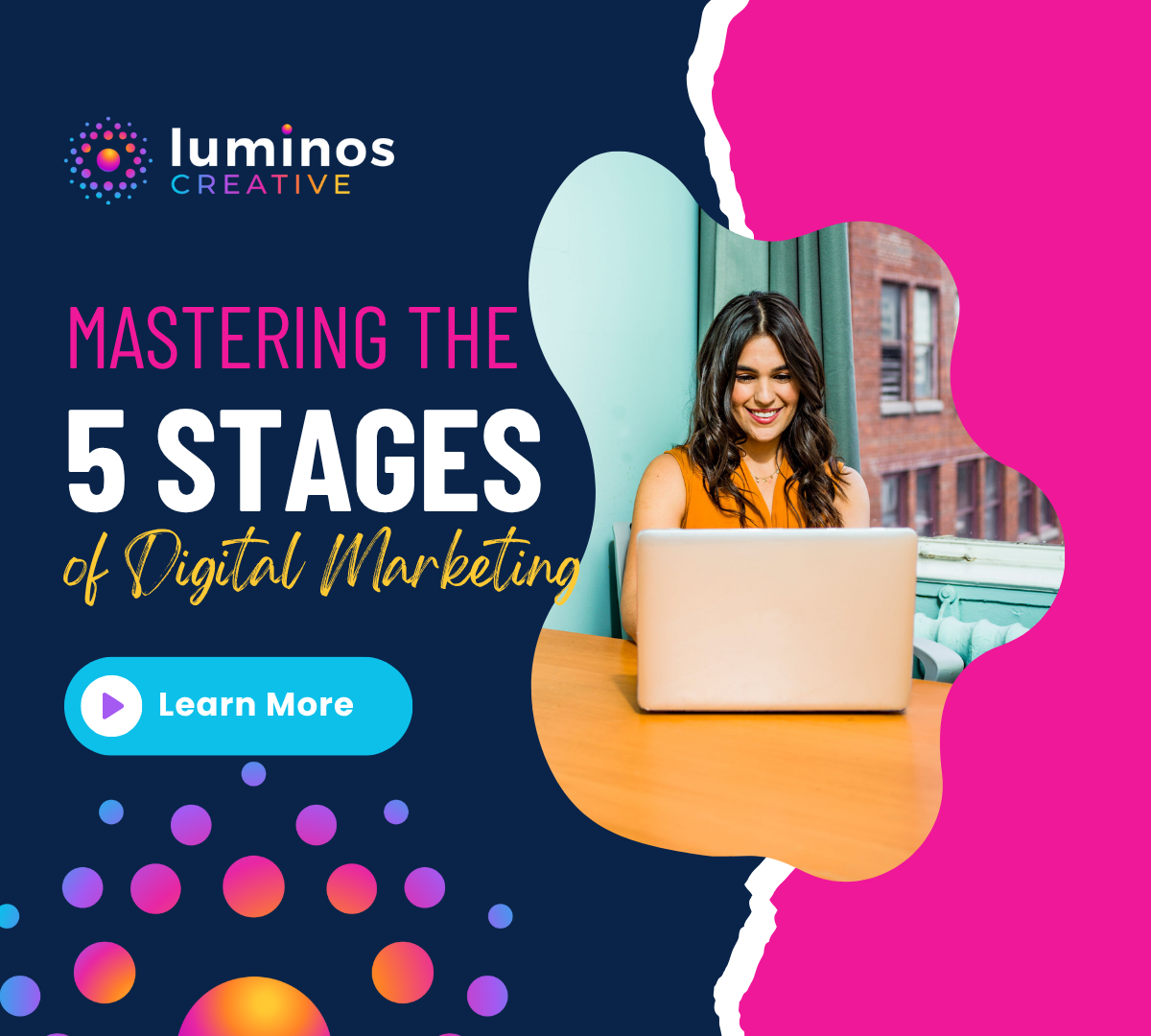We live in a world where attention is increasingly short and competition is increasingly high, so how can you make your digital marketing stand out? Creating ads isn’t enough; it’s about guiding your audience through a full journey. From first impressions to long-term loyalty, each stage of digital marketing plays a crucial role in reaching your audience.
Here’s a breakdown of each stage, how they work, and what can go wrong if you’re not paying attention.
Stage 1: Awareness
What it is:
This is, as the name implies, where your audience first discovers your brand; typically through paid ads, SEO, social media, or influencer marketing. Your goal is simple: be seen and remembered. First impressions are everything, and your digital marketing is no exception.
Problems at this stage:
- Poor targeting: Ads are shown to the wrong people, wasting budget.
- Inconsistent branding: Messaging, visuals, or tone vary across platforms.
- Lack of clarity: Audiences don’t know what you do or why they should care.
Stage 2: Consideration
What it is:
Once someone knows who you are, the next step is building trust. At this stage, people are actively researching and comparing; your website, blog content, email newsletters, case studies, and webinars are all factors that can help in this stage.
Problems at this stage:
- Low-value content: Generic blog posts or gated content with no depth. Posting AI content can be so easy, but with no human intervention, you will fall victim to this.
- Poor UX: Confusing navigation or clunky websites turn users away, creating an interactive, intuitive website goes a long way in keeping visitors. Poor UX leads to a perception that your company just isn’t put together.
- No differentiation: You look and sound like everyone else.
Stage 3: Conversion
What it is:
This is the moment of truth: when someone becomes a customer, signs up, fills out a form, or completes whatever else your desired outcome is. Clear CTAs, fast load times, and reassuring design all contribute to a successful conversion.
Problems at this stage:
- Friction: Complicated checkout, too many form fields, or missing trust signals. You have to make it easy!
- Weak offer: Nothing compelling enough to close the deal. Even if it’s a good deal, if it doesn’t come in a compelling package, it won’t matter.
- Slow site speed: A few seconds of delay can kill conversions. As we said at the beginning, people have low attention and high competition, meaning a slow load time can be all it takes for someone to click away.
Stage 4: Retention
What it is:
A first purchase doesn’t mean the relationship is over. This stage is about keeping customers engaged through email, loyalty programs, retargeting, and regular value-adds.
Problems at this stage:
- Radio silence: No follow-up or post-purchase engagement. Like any other relationship, you have to maintain it.
- Irrelevant messaging: Emails or offers that don’t match the customer’s journey. Emails that feel like spam are a quick way to drive customers away.
- Neglecting customer support: A bad experience can erase a good one.
Stage 5: Advocacy
What it is:
The holy grail of marketing: turning customers into fans. Advocates write reviews, refer others, and defend your brand. You earn this through consistency and exceptional service, showing customers that you care.
Problems at this stage:
- No review or referral system: Happy customers aren’t encouraged to share. If you don’t have a way to show these positive experiences, you can’t even start on the advocacy step.
- Missed social proof: Testimonials and user content go unused.
- Forgetting your community: No feedback loops or loyalty incentives. Give proof that you care about your advocates. Remember, these loyal customers are your best ads!
Key Takeaways:
- Marketing isn’t a funnel, it’s a flywheel. Each stage feeds the next.
- Don’t skip stages. If you’re great at awareness but terrible at retention, your growth will stall. Each step hinges on the others.
- Audit regularly. Problems may shift over time as your business scales or your audience evolves. Even if it’s working now, that doesn’t mean it will last forever.
Conclusion
Digital marketing success isn’t built on a single campaign; it’s built on consistent execution across each stage of the customer journey. By understanding where things go wrong and optimizing accordingly, you create a brand that attracts, converts, and retains customers over time.
Thank you for reading! If you think your company can benefit from a set of expert eyes on your digital marketing, feel free to reach out here!

